|
The calendar indicates I have arrived at Week 5 of Baking In Place. My circumstances are infinitely better than many, and to say I am grateful is an understatement. Good health clearly transcends everything but I would be lying if I didn’t acknowledge the one thing that makes me giddy on a daily basis. The fact that I am not responsible for the home schooling of Master Master and Blondilocks is comparable to winning the golden ticket of parenting. Thanks kids, for being fine, well educated grown-ups.
Sequestered from the rest of the world provides more than enough time and inclination for combing through the daily newspaper. I divide it into sections; Dire are the pages emblazoned with graphs, numerical charts, and bold headlines that fuel my anxiety. Delusional are the articles related to home projects that are crafty/organizational/Zen. Lacking the enthusiasm to sort through a laundry basket of mismatched socks, it’s doubtful I’ll find joy in alphabetizing my pantry. Crossword is more of an event, not a section, but highly coveted and worthy of its own category. The Arts section leaves me despondent yet hopeful and it’s what I read before bringing it all home with Miscellaneous Sorrow which I only turn to if we’re not running low on Kleenex. A daily reminder of my good fortune is humbling. We’re flush on one item in particular, the one that insists on staring me down every time I open the refrigerator. A 2 lb. bag of Red Star Rapid Rise yeast bought pre-pandemic wants to come out and play. Based on the outcry captured in every food section of every newspaper across the country, bread bakers are bemoaning their inability to access supplies, and rightly so. Flour stalking and panic buying of yeast has left market shelves empty and on-line sources exhausted. Traipsing across the kitchen in a pair of mismatched socks (I have another pair just like them) I consider my bread baking options. Admittedly, that 2 lb. bag of yeast gives me pause. I’m feeling a little bit guilty about my bonanza of Rapid Rise and the assortment of flour rarin’ to go in my un-alphabetized pantry. In the days before bread was an art form, I relied on the calm instruction found in James Beard’s Beard on Bread and Bernard Clayton Jr.’s The Complete Book of Breads. Bread baking was relaxing and I don’t recall giving any of my breads a first name. Today everything is dramatically different. Breads have become not only kneady, but needy. Like children, it’s impossible to choose one type of bread over another. Loving them equally is dangerous in the throes of a pandemic. Making a deal with oneself to wear pants with a zipper and a button is a little like making a deal with the devil. I don’t want my waistband to expand like a bowl of freshly risen bread dough covered in cling film. I’m determined to exit this pandemic looking reasonably like me and less like the Stay-Puft Marshmallow Woman. Now that every day is Sunday, (or is it Friday?) weekend bakes are tempting. I have babka-ed and brioched, sticky-bunned and crumb caked, but today these options feel excessive. Might this be a result of too many cast-iron skillet cheesy pan pizzas? Perhaps, but how many is considered too many? I would be both surprised and horrified if I tallied them all. Turning to an old reliable recipe for challah, it is the eggy, yeast bread that happily crosses the line between sweet and savory, breakfast and lunch, dinner and dessert. Challah bread is comforting, like a grandmother’s lipstick-ed kiss on your cheek. Reminding myself to check for pouffy as opposed to over-proofy, challah dough affords me all the crafty I need. Weaving an imperfect circular loaf bakes up into a multi-purpose bread. We greedily consume it by the slice until I stumble across Claire Ptak’s recipe for Strawberry Brioche Bread Pudding and put the brakes on. A handful of strawberries and rhubarb fill out the ensemble. At this performance however, the role of Brioche will be played by Challah. Waiting for the thirsty bread to drink in the orange scented custard, I pre-heat the oven and wonder where I left today’s crossword puzzle.
0 Comments
The first week of the farm share box was met with great anticipation. I was new to staying at home and unpacking a corrugated surprise package of local produce was downright riveting. When the second share arrived, I folded back the flaps with a little less enthusiasm. The box revealed a bounty of curly leaf lettuce, an assertive bunch of scallions, and enough parsley to last nearly a lifetime. There were plenty of spunky radishes and fistfuls of Popeye-approved spinach. Toward the bottom, some roly-poly onions collided head-on with a sizable purple cabbage and one stray carrot. Feeling curmudgeonly grateful, I was disappointed. Conspicuous in its absence, I had hoped to find a handful of early rhubarb, just itching to find the nearest pie plate.
As April unfurls, I’m hearing a universal sentiment voiced amongst my pie pals. Now that the novelty of sheltering in place has become curiously ordinary, we’ve hit a stay-at-home wall. We struggle to play nice with housemates who are perfectly agreeable folks under other circumstances. We are challenged by what is (and isn’t) in the refrigerator. Unidentified freezer burn Ziploc bags provide a common source of irritation. Personally, I’m growing weary of getting clunked on the head from free-falling cans of tuna fish. Those near-miss concussions are probably there to knock some sense into me, reminding me things could be far worse. My parents and grandparents had a fondness for reminding me all too often, “When you have your health, you have everything.” I don’t recall paying much attention to their mantra, preferring to coast through childhood and adolescence in a bubble of smarty-pants ignorance. Plagues were a thing of the past, depicted in biblical films starring Charlton Heston and Yul Brynner. Spanish influenza took its toll on characters stuck in serial costume dramas, aired on our local PBS channel. Face masks and gloves were reserved for John Wayne movies and the Wild, Wild, West; not for leaving the house. Attempting to choreograph a farm share’s worth of produce into the confines of a refrigerator takes time and patience. I have plenty of the former and not enough of the latter. It also brings me up close and personal with the ‘use by’ dates flaunted across perishables. This provides a not-so-subtle reminder that I am standing smack dab in the week that was supposed to be different. My calendar earmarks this week as one slated for travel and featuring far more cake than pie. It was a week dedicated to special birthdays and happily-ever-afters. My baking mise en place called for enough butter, sugar, flour, and eggs to yield a multi-tiered, multi-flavored confection. One cake was all about chocolate and one cake was for lovers of almond. And still another cake was slated for drifts of coconut, room for candles and the accompaniment of off-key singers. Although I dedicated a great deal of attention to the mathematics of large scale baking, I forgot to factor something into the equation. I forgot to consult with Life. Life is the thing that sometimes gives you lemons that can easily, albeit begrudgingly, be squeezed into lemonade. Clearly, Life wasn’t listening when I casually asked for a few dozen lemons, just enough to yield a generous recipe of lemon curd. Life had other plans, gathering far too much citrus for a tall glass, or a wide-mouthed pitcher of lemonade. Instead, Life provided a tidal wave of lemons, more than enough to derail all plans. With nothing but white space and a few Zoom cocktail hours on my calendar, I have plenty of time to circle the kitchen. The occasional crunch underfoot requires a casual sweep or a little vacuuming, or both. This feeble attempt at tidying is less about housekeeping and all about distraction. The stand mixer and paddle attachment offer a constant source of diversion, but today I’m fixated on the ruckus in the fridge. The warped crisper drawer is over-filled, refusing to close. My patience with one particular vegetable is wearing thin. “Someone oughta make a slaw outta you!” I scold the bulbous head of cabbage. The cabbage is nonplussed. Not feeling the slaw love at the moment, the multi-layered vegetable seems better suited to a vibrant soup. Tightening my grip on the cabbage, I do more damage to the off-kilter drawer. Setting the cabbage on the counter and eyeing him critically, I put the soup on hold. Crafty feels more appropriate right now as I strive to regain my footing. Having the rug pulled out from under your yet-to-be-worn-sensibly-heeled dance shoes alters your perspective. It certainly gives you a new and cautious appreciation for lemons. Passover has a way of announcing itself, with the same showiness that forsythia and magnolia bring to the April landscape. Most years, supermarkets are decked out in extensive Seder provisions. Unwieldy cases of matzoh, too big for a shopping cart and impossible to tuck under your arm commandeer end cap displays. Canisters of macaroons in curious flavors jostle each other for shelf space. Slim blue boxes of matzoh ball soup mix squeeze in alongside jars of gefilte fish. This year, I climbed a step ladder to get a clear look at what was hiding on the top shelf of my pantry. Behind the oversized box of kosher salt, I uncovered a wealth of Passover fixings. Some of them were recent purchases, others less so. A fresh box of Streit’s matzoh meal and an unopened box of matzoh from 2019 seemed perfectly harmless. Two partial bags of coconut, one from Baker’s, the other from Bob’s Red Mill, would have to satisfy any macaroon hankerings. Accustomed to baking 1,000 macaroons in a commercial kitchen, I liked the idea of baking a mere dozen. This pantry windfall proved fortuitous because in our current climate, the supermarket is to be avoided like the plague.
My father’s delivery of the Passover story was succinct, a result of the endless, boring Seders he endured as a child. It was also an abbreviated version of the detailed Haggadah because he believed hot food should be served hot. “Why are we gathered here this evening?” he asked, glancing around the table at the expectant and hungry faces. “We are here to remember, to retell a story that was told by my father, and my father’s father, and so forth… for generations. It is the retelling of a story that celebrates freedom from oppression.” At the conclusion of the four questions, my father set down the Haggadah and reemphasized that Passover was, in a nutshell, all about family and the passing on of traditions from one generation to the next. He also made it very clear that although the Haggadah allowed reclining, he did not allow elbows on the table. Passover 2020 tells a slightly different story, one that will be told to future generations, about a time when faced with truly dire circumstances, we were forced to hunker down at home. The irony of this Passover is that for the first time in eons, I had nothing but time to prepare a Seder. What made this night different from all other Passover nights was that the table required only two place settings and room for a laptop computer. Second only to Thanksgiving, Passover was the holiday that always required adding all of the extensions to the dining room table, plus a table that inched its way into the living room. The menu was traditionally staid, virtually unchanged year after year, and greeted with joyful expectation. It was an elaborate meal of many courses, all prepared with great care by three women; my grandmother, my mother, and Jessie. The sounds of Passover in the making were predictable and comforting. What I remember most distinctly was the repetitive spinning of the Sunbeam mixer, beating what looked like dozens of eggs and extra-fine sugar into a gossamer sponge cake. We weren’t allowed to jump or slam a door because there was a sponge cake in the oven. When the sponge cake had risen dramatically over the top of the tube pan and was cooling on a rack, the oven was cranked up to high to accommodate an over-sized, matzoh-stuffed bird. The door of the oven creaked incessantly when it was opened and closed, the oven racks groaning under the weight of the roasting pan. On top of the stove, a cavernous pot of chicken soup simmered, sparking debate over matzoh balls, dense (my father’s preference) or light (my mother’s preference). There was never enough room in the refrigerator for the tub of chicken soup, necessitating a constant reconfiguration of dairy and produce. The fragrance of Passover was distinctive, teetering on aggressive. Sautéed onions and celery wafted through the kitchen door, snaking down hallways, climbing stairs. Homemade gefilte fish was an enormous undertaking, requiring mountains of finely grated onions and freshly grated horseradish. Depending upon where you stood in the kitchen, your eyes streamed or your nostrils flared, or your throat tickled, or all three. It was glorious, all of it; the chatter, the cooking, the elbow-to-elbow togetherness. Beyond the kitchen you could hear the clatter of the ‘good’ dishes and the jangle of sterling silver muffled against a freshly pressed tablecloth. The pristine damask never stood a chance against the menu. Classic charoset piled high in my grandmother’s cut-glass bowl couldn’t contain itself. Toppling off squares of matzoh, it left an indelible trail of cinnamon-spiced apples, walnuts, and Welch’s concord grape juice at each place setting. As the meal continued, there was the inevitable glass of wine or grape juice mishap, made worse by trying to abate the flood with a monogrammed napkin. Passover occasionally fell on my dad’s birthday, necessitating a menu change. The sponge cake was replaced by a Kiss Torte, a behemoth meringue baked in an ancient springform pan. The Kiss Torte required hours of oven time, first at a low heat, (what my grandmother referred to as a ‘slow’ oven) then with the oven turned off to set the meringue. Split and filled with whipped cream, strawberries, and bananas, it was the most dramatic and eagerly anticipated part of the meal. One of the great joys of the flourless holiday took place days after the Seder leftovers were exhausted. Filling the West-Bend electric fryer with Crisco and hoisting a heavy cast iron skillet from beneath the oven, Jessie orchestrated our favorite meal. Creating an assembly line of dishes in graduated sizes, Jessie filled one with matzoh cake flour and spices, one with beaten eggs, and one with seasoned matzoh meal. Systematically dredging pieces of chicken in eggs and matzoh, most of the chicken fit comfortably in the electric fryer. The overflow monopolized the cast iron skillet, rhythmically percolating in oil. Jessie was very particular about not crowding the chicken, giving it plenty of time to cook thoroughly, which felt like an eternity. Transferring the first few pieces to a Farberware pan lined with paper towels drew us into the kitchen like a magnet. Hoping the smallest pieces would go unnoticed, we tried to sneak off with a wing or a second joint, but Jessie saw everything. Advising us to set the table and stop ‘fussin’ with the chicken, we retreated. Passover 2020 will forever be remembered as the year technology allowed us to gather together, yet separately. In keeping with tradition, I set the table with dishes and silver worthy of a holiday, and spilled the requisite amount of charoset on the tablecloth. Squinting to see the faces assembled across the computer screen, it almost sounded like Passover, save for the absent clatter of knives and forks and soup spoons. No one was eager to tear up the living room hunting for the Afikomen and for the first time in ages, not a single wine glass was accidentally broken. As surreal as it was on many levels, there was one aspect of the holiday that my parents would have loved; none of the Seder-goers had to drive home in the dark, because everyone was already home. My former boss and mentor, Roger Eatherton, passed away a week ago, adding one more layer of sadness to an already surreal world. To say Roger was a wizard of efficiency was an understatement. Born and raised in South Dakota, Roger learned the art of pie baking from three generations of mid-western women; his great grandmother, his grandmother and his mother. Roger was much more than a formidable baker; he was a productivity expert, a brilliant mechanical engineer and a visionary.
Roger’s purchase of a Bucks County farm forever changed my career. Following a ten-year stint owning and operating a restaurant, I was ready for a change. Ignoring the fifty minute commute in good weather, (longer when it snowed), I found myself working in a kitchen framed by windows overlooking apple orchards, fields of wildflowers and meandering rows of pick-your-own berries. The original bakery was compact, outfitted with Roger’s bench, a double door refrigerator, a wall of deck ovens, and two commercial mixers. An imposing dough sheeter ran the entire length of one wall. Freezers were located on the other side of the building, beyond the weathered cider press. As the business continued to flourish, Roger and his wife, Jane, saw the clear need to expand the bakery. The new space was meticulously designed with the vision of an engineer, equipped with time saving technology Rube Goldberg would have applauded. Amidst the convection ovens, dough rounders, and rotating bread oven, stood one of Roger’s favorite pieces of equipment. The humble doughnut fryer and batter depositor was an engineer’s dream. Cider-spiked batter fell into a pool of hot oil, sizzling and bobbing towards the surface. Armed with a giant pair of tongs, Roger plucked the doughnuts from the fryer, dropping them into a cavernous tub of cinnamon sugar. On Saturday mornings, the tangle of hot oil and cinnamon wafted through the screen door of the bakery, assaulting my senses before I’d barely stepped out of my car. “Have a doughnut,” Roger would say as I crossed the kitchen with my first cup of coffee. In all of the years I worked for Roger, that Saturday morning doughnut, dangerously hot out of the fryer with a thick coating of cinnamon sugar, was impossible to resist. Roger and I approached baking from two vastly different perspectives, agreeing to disagree on many things. Roger was a devout believer of cakes slathered in frosting, I felt cakes should be adorned with buttercream. I vouched for cake pans in graduated sizes while Roger swore by baking cake layers in sheet pans. My idea of pie crust called for unsalted butter while Roger was an unwavering supporter of shortening. Roger relied on the consistency of Individually Quick Frozen fruit while I avoided frozen fruit like the plague. Roger also had a strong aversion to any diminutive baked goods he felt required “too much fiddle.” Roger spoke fluent Metric system, while I spoke Imperial. When I said ounce, Roger said twenty-eight- point-three grams. Potato, potahto. When it came to mise en place, I liked to assemble all of my ingredients side by side on my workbench. Roger’s version consisted of emptying ginormous bags of flour, sugar, and leavening directly into industrial sized mixing bowls. One of my first days at the bakery, I gathered together a number of ingredients, among them cake flour. Determined to produce a silky batter, I scanned the utensils looking for a sifter. “Roger,” I asked, “do you have a sifter?” Roger paused before responding, answering my question with an incredulous look. Exploding with laughter, he doubled over in hysteria, punctuating his laugh with a few knee slaps, before finally dabbing his eyes with the edge of his apron. Over the years, he loved to retell the story in excruciating detail, “And then Ellen said, ‘Roger, do you have a sifter?’ A SIFTER!!!” Working for Roger taught me more about production and less about minutiae. It’s impossible to forget Roger’s infectious laugh, the well-worn baseball cap perched on top of his head, or the way he rolled pie shells at a dizzying speed. There always seemed to be a fine mist of all-purpose flour circling him as he worked. Because of Roger, I purchased my first kitchen scale all those years ago and allowed frozen fruit to occasionally edge its way into a pie plate. Embracing challenge over retirement, Roger and Jane began a new chapter in upstate New York several years ago. Another farmhouse beckoned, this time attached to 250 acres of rolling vineyards framed by the Finger Lakes. I visited with them last summer, touring the vineyard and the new bakery, designed by Roger. The bakery housed all of the equipment I remembered, including the doughnut fryer. Driving south along the Seneca wine trail with Roger’s signature laugh echoing in my ears, I felt my nose twitch; cinnamon. |
Archives
July 2024
Ellen GrayProfessional Pie-isms & Seasonal Sarcasm Categories |
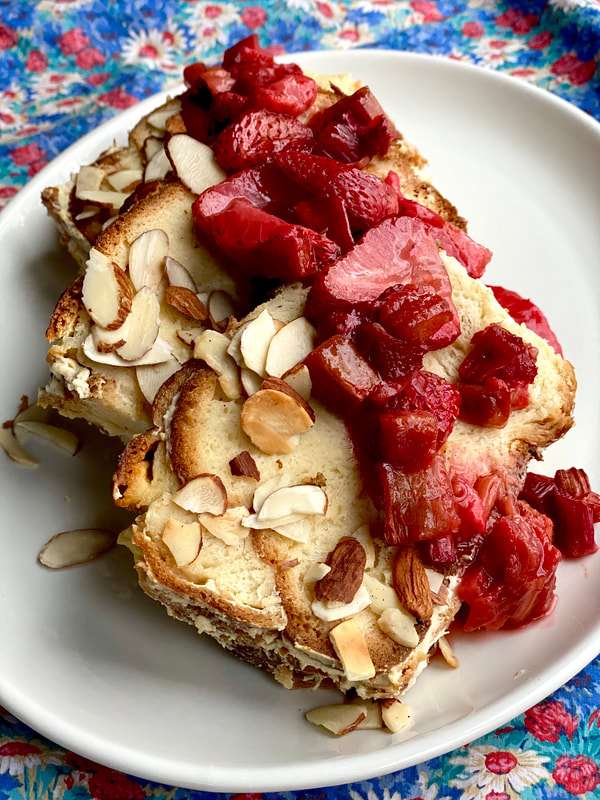
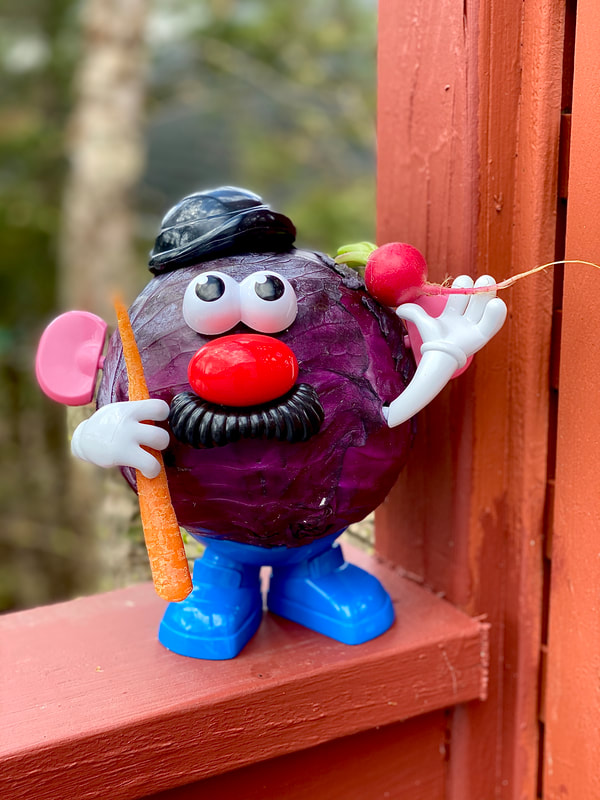
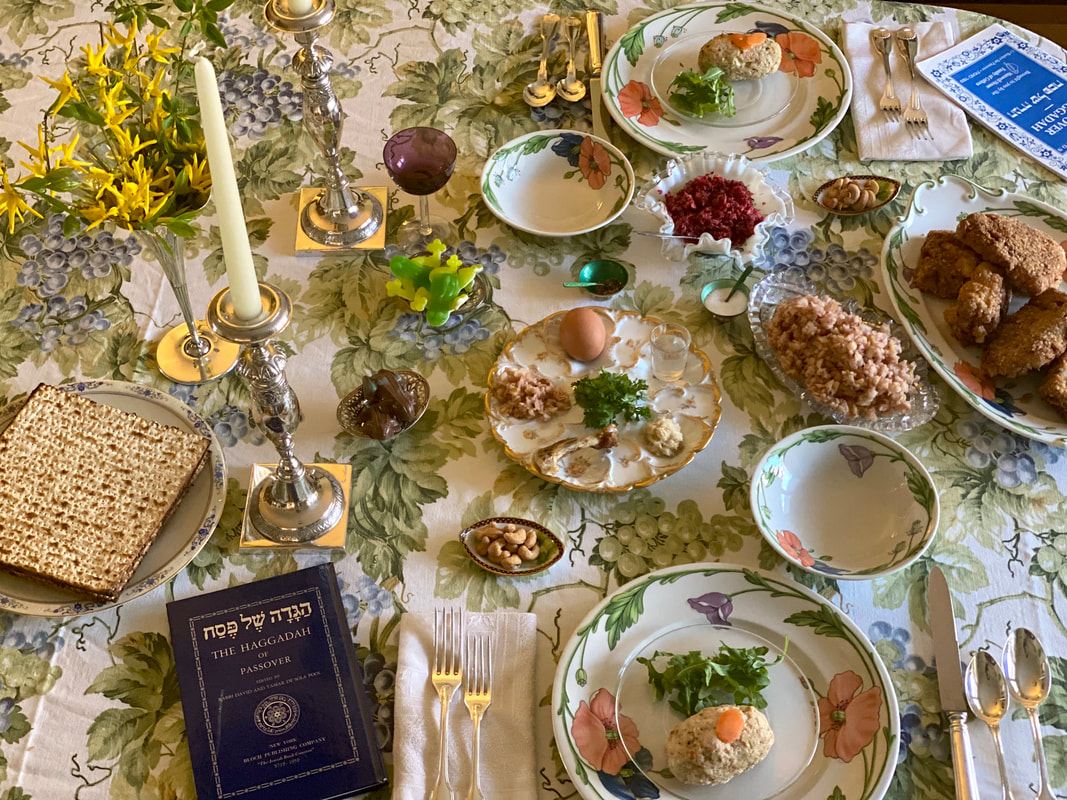
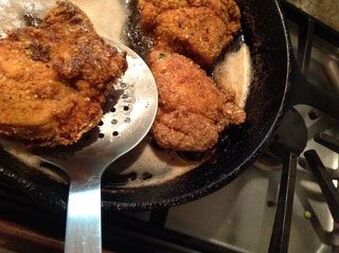
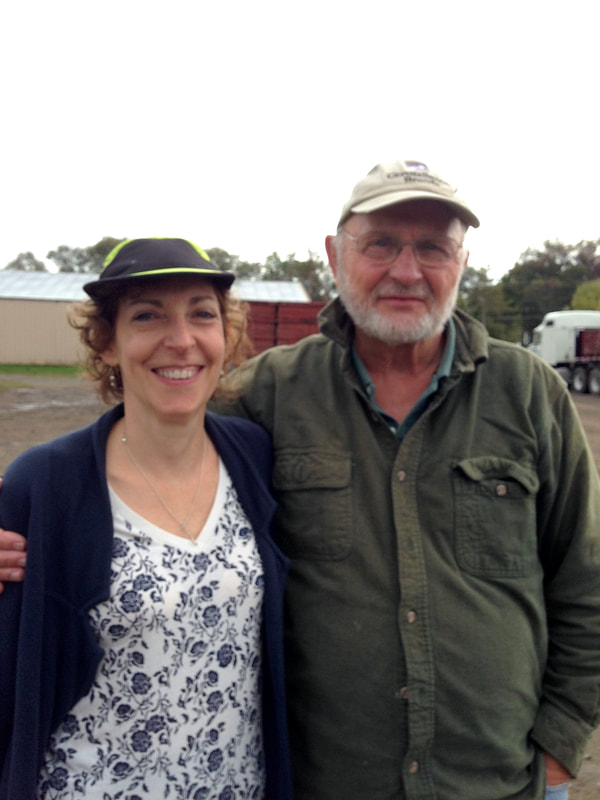
 RSS Feed
RSS Feed